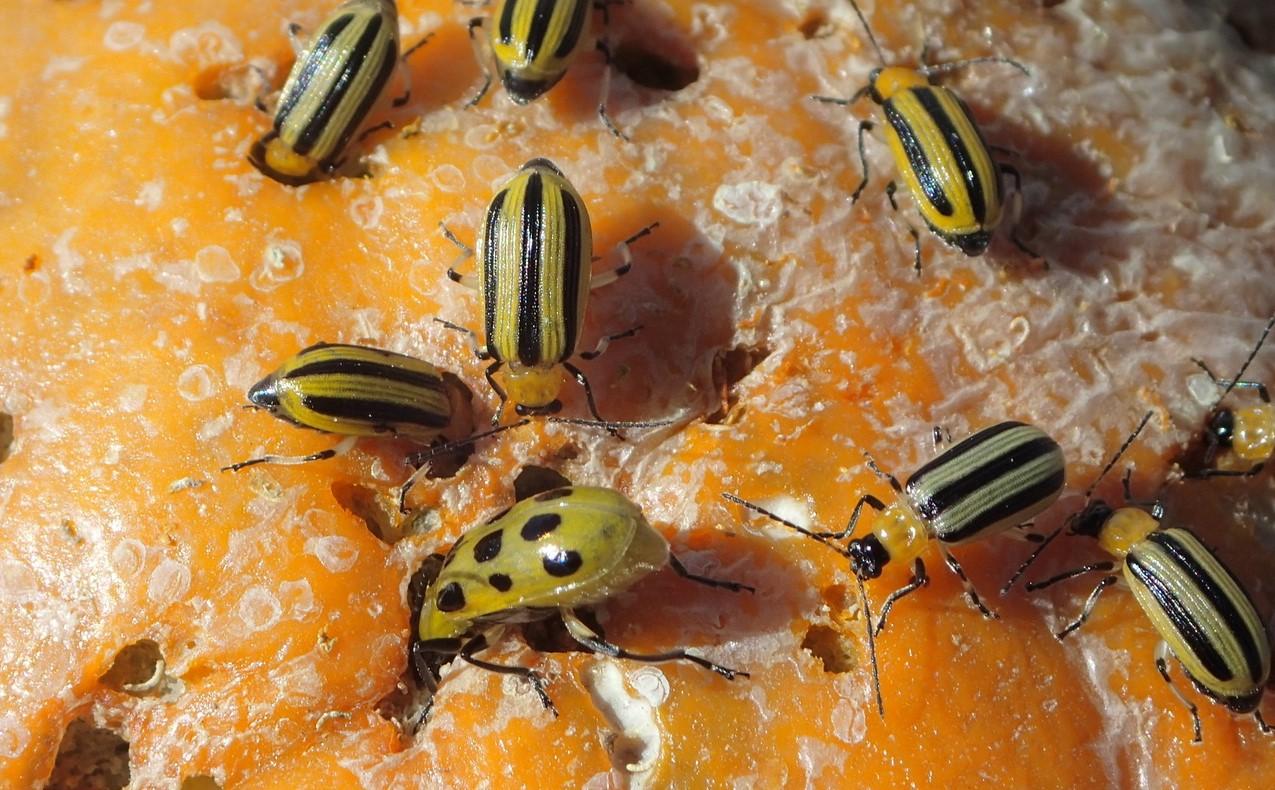Insects that look like ladybugs on cucumbers
Appearance
- Eggs: Clusters of yellow to orange oval-shaped eggs are laid on or just under coarse, cracked soil.
- Larvae: Both species are yellowish-white, 1/2" long, wormlike with dark heads.
- Adults: Up to 1/4" long with black head. Spotted beetle is yellow-green with 12 black spots on the back. Striped beetle is yellow with three black longitudinal stripes on the back.


Photo: J. Linduska
Life cycle/habits
- Overwinter as adults in plant debris and nearby wooded areas; striped beetles may also overwinter in the soil.
- In spring, the spotted cucumber beetle prefers to deposit eggs in wet, coarse soil. Striped cucumber beetle deposits eggs around the base of plants, on vines, or just below soil surface.
- Spotted cucumber beetle larvae feed on roots, stem base, or fruit surface (thus the name "rindworm").
- Striped cucumber beetle larvae feed mostly on roots and stems.
- After pupating in soil, adults feed on seedlings, flower petals, leaves, and fruit.
- Plants are generally less prone to damage after fruit set. 4-6 weeks for each lifecycle.
- One to three generations per growing season.
Host plants
- Spotted: Cucurbits (i.e. cucumber, squash, pumpkin, muskmelon) legumes, tomato, ornamentals, and fruits, plus many other weeds and cultivated plants.
- Striped: Primarily cucumbers & other cucurbits, but many other crops such as apple, pear, green beans, okra, eggplant, and potato, plus tree and shrub blossoms.
Signs/symptoms
- Larvae eat roots and burrow in young plant stems, causing wilt or death.
- Adults eat seedlings and chew holes in leaves, flowers, and fruit. Adults gouge and rasp fruit, especially smooth melons, and damage may be worse on the shaded undersides of fruit contacting soil where beetles congregate to avoid heat.
- Spotted cucumber beetle (Southern corn rootworm) eats roots of beans and corn as well as cucurbits.
- Both beetles are serious vectors (carriers) of plant diseases, including Fusarium wilt, mosaic viruses, muskmelon necrotic spot virus, and cucurbit bacterial wilt, although spotted beetles are considered less important vectors of this devastating disease than striped beetles.
- Cucurbit bacterial wilt causes sudden wilt and death, mainly of cucumber and muskmelon, but also of summer squash.


